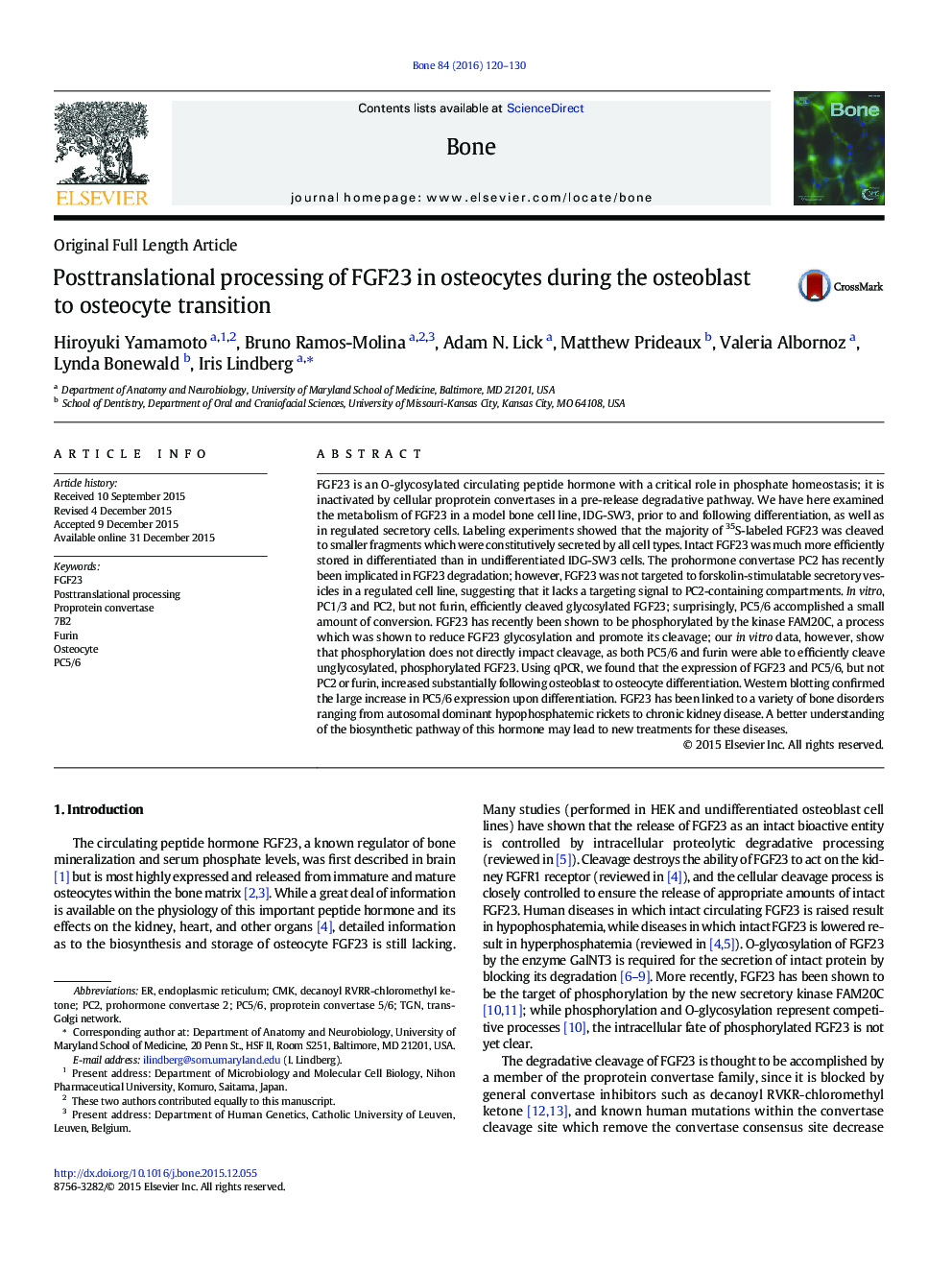| کد مقاله | کد نشریه | سال انتشار | مقاله انگلیسی | نسخه تمام متن |
|---|---|---|---|---|
| 5889420 | 1568135 | 2016 | 11 صفحه PDF | دانلود رایگان |

- In undifferentiated bone cells FGF23 exhibits a degradative pathway similar to that previously described in HEK cells.
- Following bone cell differentiation, cellular storage of FGF23 is enhanced.
- FGF23 represents a constitutively-trafficked protein unlikely to encounter PC2, as previously proposed.
- The convertase PC5/6, which efficiently cleaves phospho-FGF23, undergoes the greatest amplification during differentiation.
- PC5/6 may play an important role in precursor processing in differentiated osteocytes.
FGF23 is an O-glycosylated circulating peptide hormone with a critical role in phosphate homeostasis; it is inactivated by cellular proprotein convertases in a pre-release degradative pathway. We have here examined the metabolism of FGF23 in a model bone cell line, IDG-SW3, prior to and following differentiation, as well as in regulated secretory cells. Labeling experiments showed that the majority of 35S-labeled FGF23 was cleaved to smaller fragments which were constitutively secreted by all cell types. Intact FGF23 was much more efficiently stored in differentiated than in undifferentiated IDG-SW3 cells. The prohormone convertase PC2 has recently been implicated in FGF23 degradation; however, FGF23 was not targeted to forskolin-stimulatable secretory vesicles in a regulated cell line, suggesting that it lacks a targeting signal to PC2-containing compartments. In vitro, PC1/3 and PC2, but not furin, efficiently cleaved glycosylated FGF23; surprisingly, PC5/6 accomplished a small amount of conversion. FGF23 has recently been shown to be phosphorylated by the kinase FAM20C, a process which was shown to reduce FGF23 glycosylation and promote its cleavage; our in vitro data, however, show that phosphorylation does not directly impact cleavage, as both PC5/6 and furin were able to efficiently cleave unglycosylated, phosphorylated FGF23. Using qPCR, we found that the expression of FGF23 and PC5/6, but not PC2 or furin, increased substantially following osteoblast to osteocyte differentiation. Western blotting confirmed the large increase in PC5/6 expression upon differentiation. FGF23 has been linked to a variety of bone disorders ranging from autosomal dominant hypophosphatemic rickets to chronic kidney disease. A better understanding of the biosynthetic pathway of this hormone may lead to new treatments for these diseases.
Journal: Bone - Volume 84, March 2016, Pages 120-130